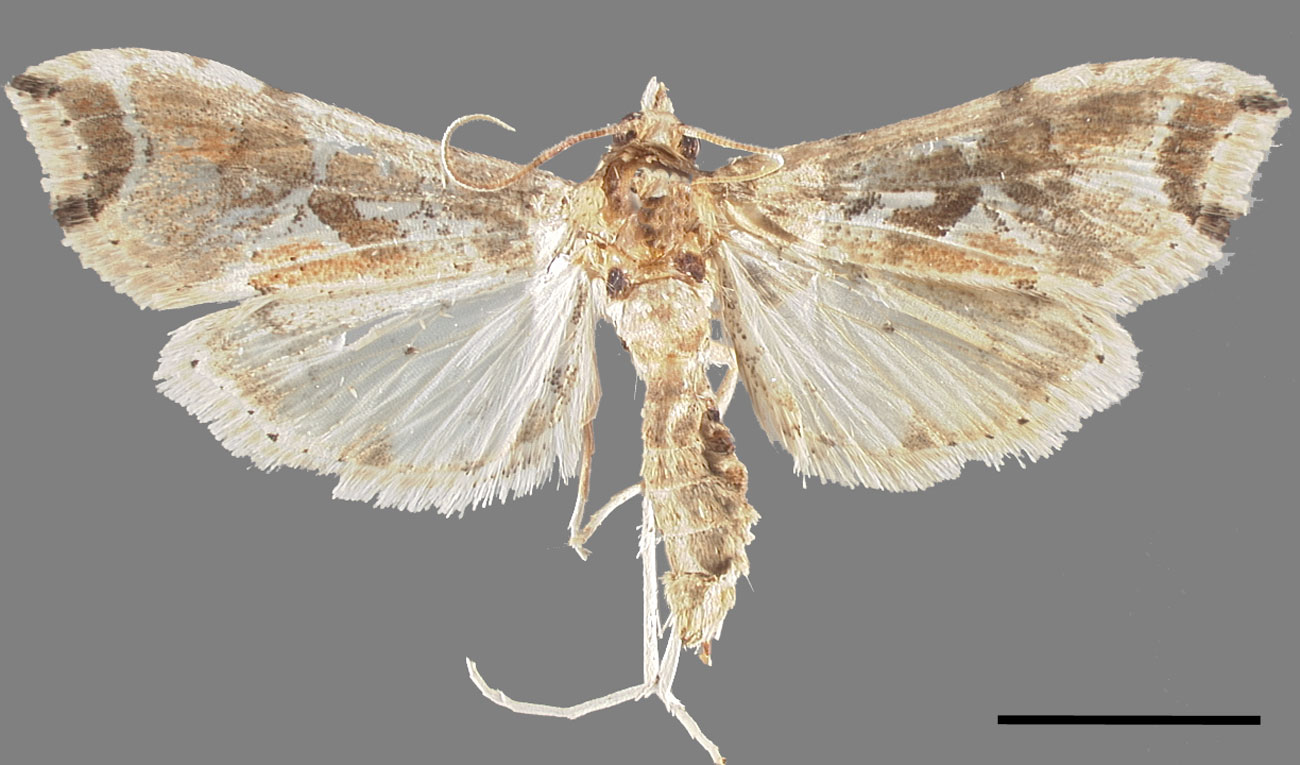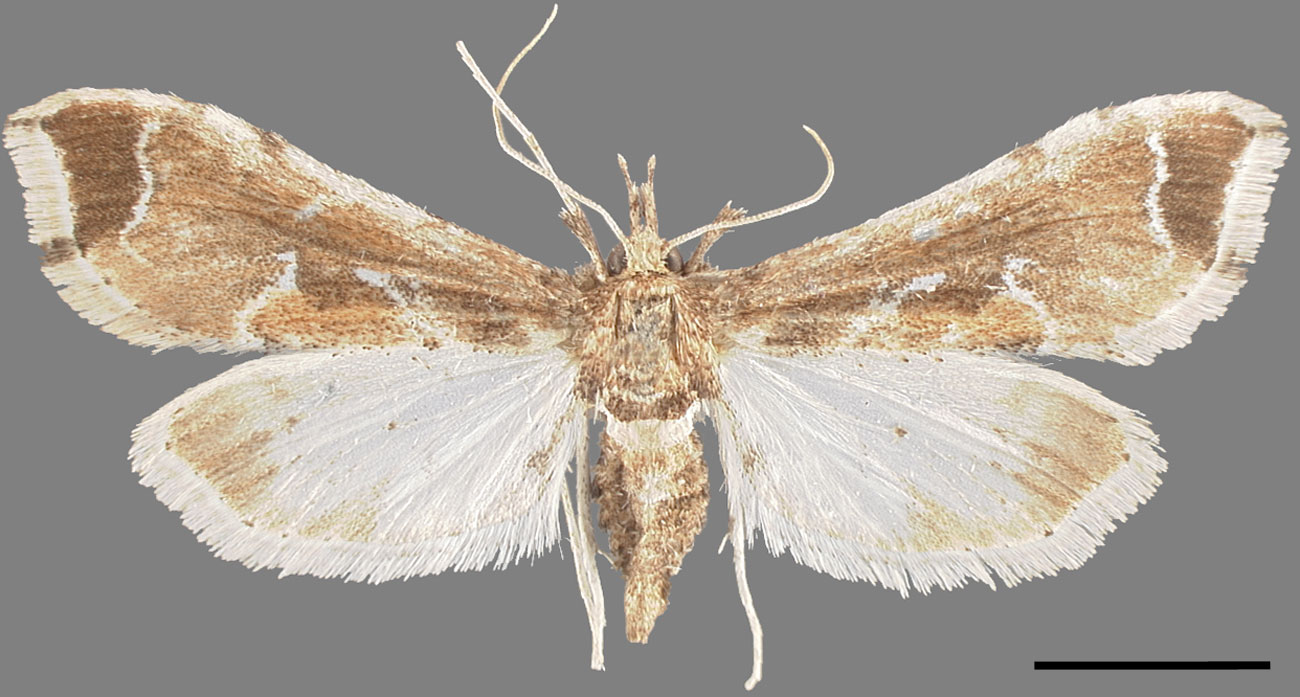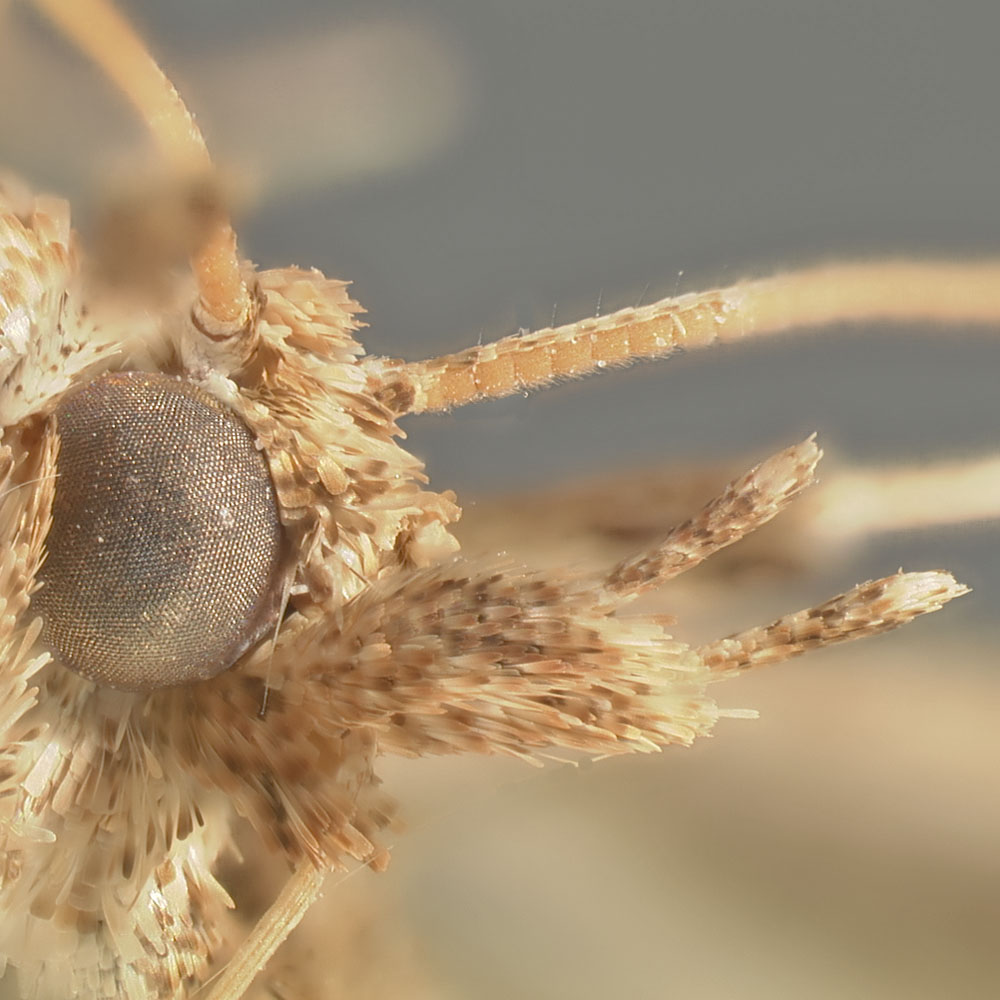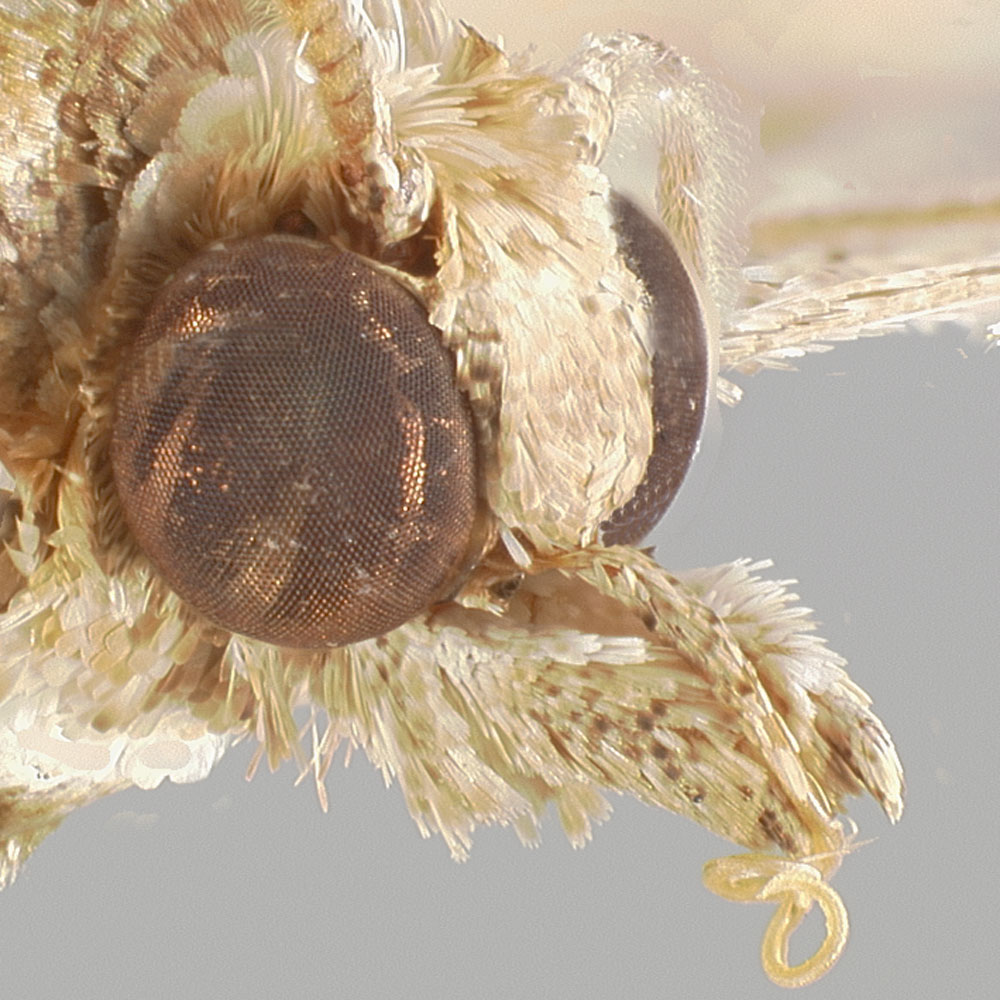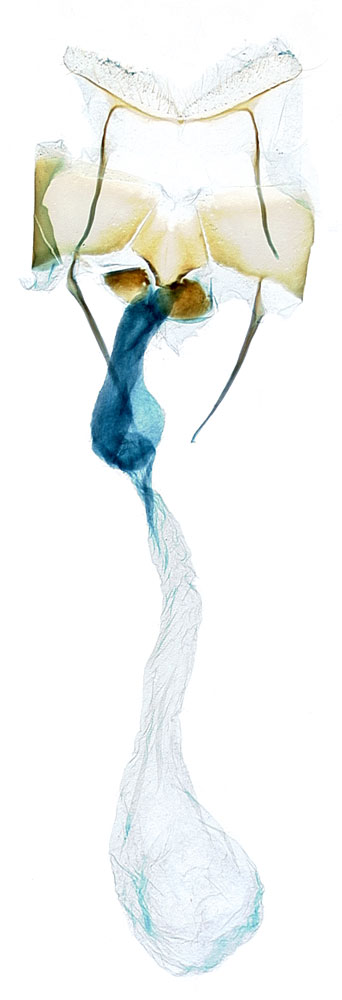Sceliodes laisalis
|
Sceliodes laisalis male habitus. Scale = 5 mm. |
|
Sceliodes laisalis female habitus. Scale = 5 mm. |
|
Sceliodes laisalis head of female. |
|
Sceliodes laisalis head of male. |
|
Sceliodes laisalis male genitalia. |
|
Sceliodes laisalis female genitalia. |
|
Sceliodes cordalis live larva. © Roy Goff, www.africanmoths.com |
Name
Sceliodes laisalis (Walker, 1859)
Common name: Brown-tipped pearl
Original combination: Megaphysa laisalis Walker, 1859
Synonyms:
- Daraba idmonealis Walker, 1859
- Daraba plenisignata Walker, 1866
- Hyamia subterminalis Walker, 1866
Alternative combinations: Daraba laisalis
Classification: Pyraloidea: Crambidae: Spilomelinae, Leucinodes group
Adult recognition
Forewing length: 10.0–13.0 mm, broad. The fronsFrons:
The front of the head, between the eyes.
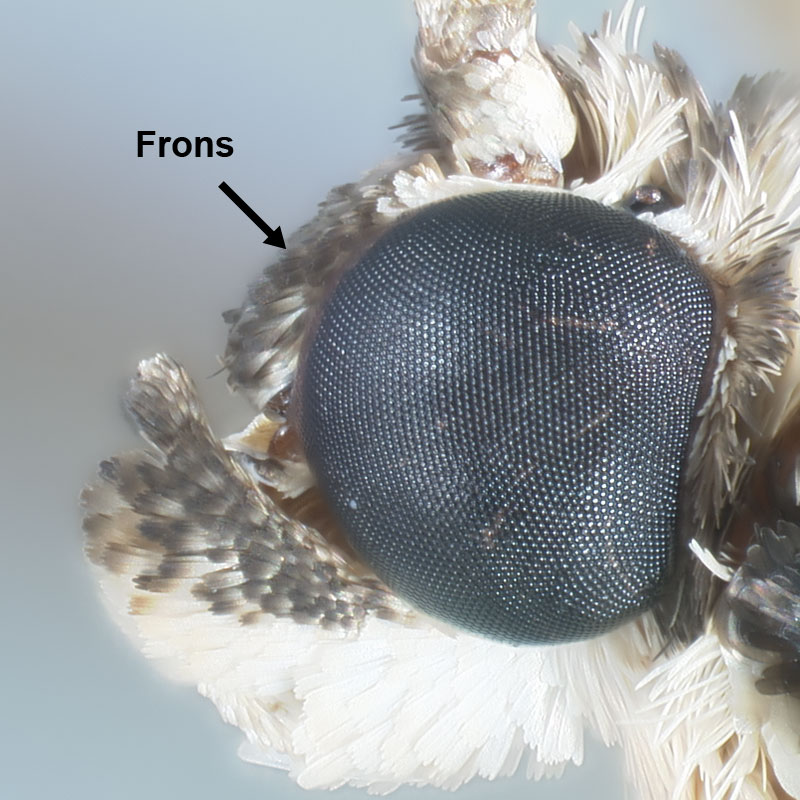 is rounded and not projected. In the female, the apical segment of the palps is very long, as long as the second segment, and it is short in the male. The wings are white and brown. The forewing posterior margin has an orange triangle that slightly contrasts with the brown ground color. The male genitalia have an elongate saccusSaccus:
is rounded and not projected. In the female, the apical segment of the palps is very long, as long as the second segment, and it is short in the male. The wings are white and brown. The forewing posterior margin has an orange triangle that slightly contrasts with the brown ground color. The male genitalia have an elongate saccusSaccus:
A ventral extension of the vinculum, between the valvae.
 and phallusPhallus:
and phallusPhallus:
The intromittent part of the male genitalia, also known as the aedeagus.
 . The fibulaFibula:
. The fibulaFibula:
Any projection on the face of the valva (not including the saccular process, if any).
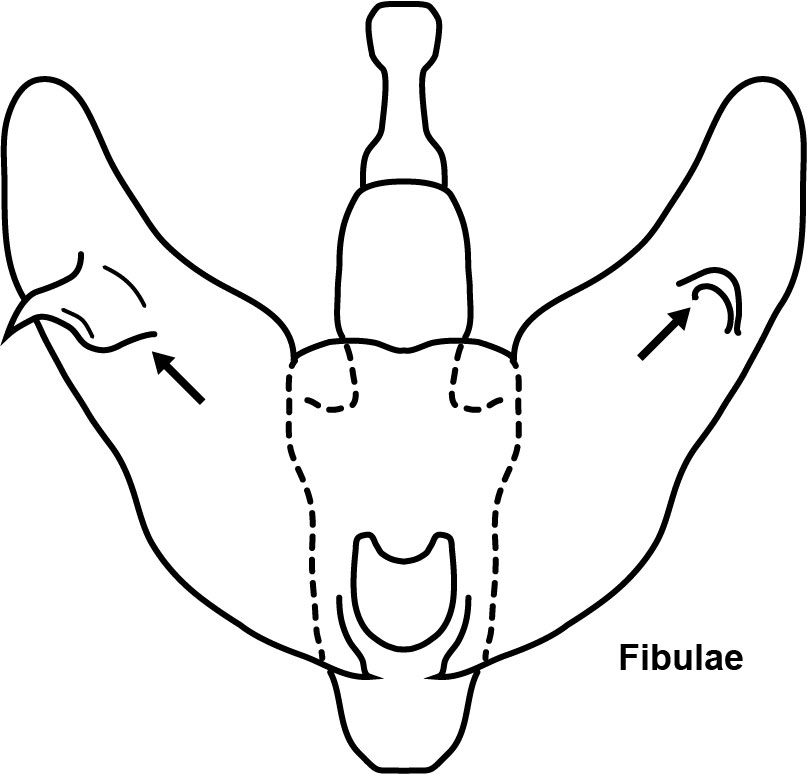 lacks long, distinct teeth but has a nodular basal swelling, and its apical process is short and broadly triangular. The female genitalia have a pair of smooth, relatively flat ostial scleritesOstial sclerites:
lacks long, distinct teeth but has a nodular basal swelling, and its apical process is short and broadly triangular. The female genitalia have a pair of smooth, relatively flat ostial scleritesOstial sclerites:
Sclerites associated with the ostium bursae.
 and the antrumAntrum:
and the antrumAntrum:
Posterior section of the ductus bursae, posterior of the colliculum.
 thickened like a round-bottomed flask.
thickened like a round-bottomed flask.
Immature stages
Larvae are white, turning pink as prepupae, and grow to 18–20 mm in length. The pinacula are straw-colored. The prothoracic shieldProthoracic shield:
Also called the T1 shield. In the larva, the extensive sclerotized area of the dorsal half of the prothorax. It bears six setae on each side, and its color pattern is often diagnostic.
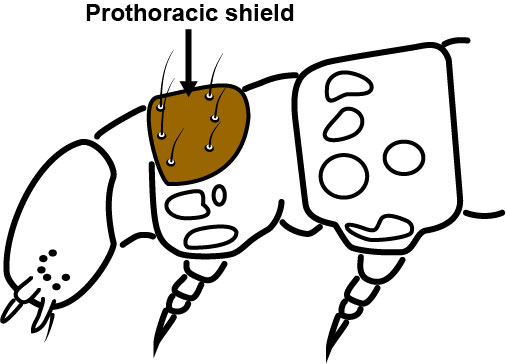 is only lightly pigmented, but there are two pairs of distinct brown spots, one mid-laterally above the spiracles and the other on the middle posterior margin. The A8 SD1 setaSeta:
is only lightly pigmented, but there are two pairs of distinct brown spots, one mid-laterally above the spiracles and the other on the middle posterior margin. The A8 SD1 setaSeta:
A larval hair (pl. setae).
 is anterodorsal of the spiracleSpiracle:
is anterodorsal of the spiracleSpiracle:
Respiratory openings, mainly of interest for larval chaetotaxy. One pair on most segments.
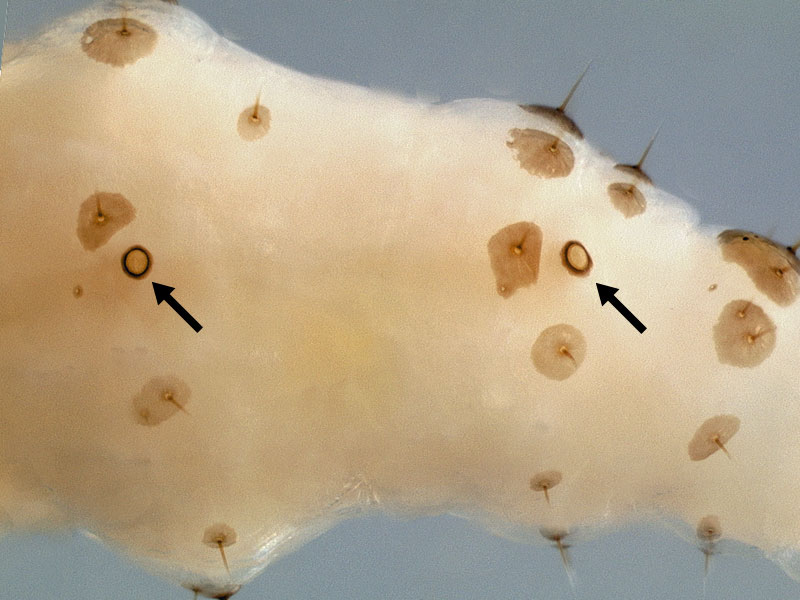 .
.
Similar species
Sceliodes cordalis is similar in wing pattern, but the orange triangle on the forewing is not distinct. The fronsFrons:
The front of the head, between the eyes.
 is conically swollen, not flat. It has a fibulaFibula:
is conically swollen, not flat. It has a fibulaFibula:
Any projection on the face of the valva (not including the saccular process, if any).
 with long basal teeth and lacks a long saccusSaccus:
with long basal teeth and lacks a long saccusSaccus:
A ventral extension of the vinculum, between the valvae.
 . The female ostial scleritesOstial sclerites:
. The female ostial scleritesOstial sclerites:
Sclerites associated with the ostium bursae.
 are rough and curved. Features that differentiate the larvae of Sceliodes species have not been worked out.
are rough and curved. Features that differentiate the larvae of Sceliodes species have not been worked out.
Behavior
Eggs are laid in small groups on the underside of the calyx. After 4 or 5 days, larvae hatch and immediately bore into the fruit; entry holes are small and hard to see. Larvae feed in the fruit for 10 to 12 days, then emerge to spin a cocoon away from the fruit, on the trunk or on the ground, incorporating dry debris into the cocoon, or occasionally on the fruit if a small, dried berry. Pupation lasts 8 to 15 days in a gray cocoon.
Distribution
The species occurs through most of Africa, from South Africa, through tropical Africa to Somalia, Sudan and Morocco. In Europe it is established in southern Spain and Portugal, and is occasionally intercepted elsewhere.
Hosts
Primary:
- S. anguivi Lam. (“S. sodomaeum L.,” bitter apple, apple of Sodom, tomatillo del diablo).
- S. macrocarpon L. (nightshade)
- S. melongena L. (eggplant)
Secondary:
- Capsicum annuum L. (pepper)
- Solanum linnaeanum Hepper and P.-M. Jaeger
- S. lycopersicon L. (tomato)
Comments
The species is distributed widely in Africa. In southern Spain, a few individual specimens were occasionally caught at light over the years, but it was found to be abundant only when its preferred local host plant, Solanum anguivi (= S. sodomeum), was identified and targeted. Presumably, the moth does not fly far from the hosts.
Literature
Aina 1984Aina 1984:
Aina JO. 1984. The biology of Daraba laisalis (Wlk) formerly called Sceliodes laisalis (Wlk) (Pyralidae, Lepidoptera), an egg fruit borer. Insect Science and its Application 5: 513-520.
Goff 2013Goff 2013:
Goff R. 2013. Sceliodes laisalis (Walker, 1859). African Moths. http://www.africanmoths.com/pages/CRAMBIDAE/SPILOMELINAE/sceliodes%20laisalis.html
Huertas Dionisio 2000Huertas Dionisio 2000:
Huertas Dionisio M. 2000. Estados inmaduros de Lepidoptera (XIII). Tres especies de origen tropical de la subfamilia Pyraustinae Meyrick, 1890 (Lepidoptera: Pyraloidea, Crambidae). SHILAP Revista de Lepidopterologiacute;a 28: 321-334.
Ogunwolu 1978Ogunwolu 1978:
Ogunwolu EO. 1978. Sceliodes laisalis (Pyralidae): Description of the mature larva and note on its feeding habit. Journal of the Lepidopteristsrsquo; Society 32: 175-177.
Taylor 1951Taylor 1951:
Taylor JS. 1951. Notes on Lepidoptera in the Eastern Cape Province (Part II). Journal of the Entomological Society of South Africa 14: 94-126.
Photo credits
Fig. 7: © Roy Goff, www.africanmoths.com

